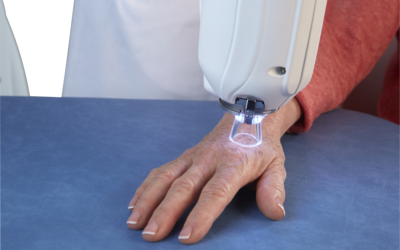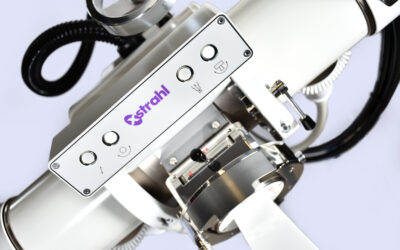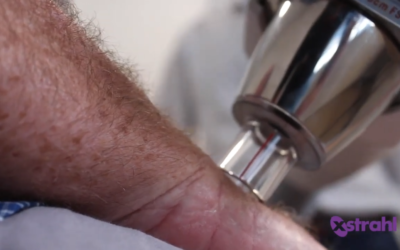PURPOSE:
The aim of this study was to define current patterns of care among radiation oncologists who use skin surface brachytherapy for the treatment of cutaneous squamous cell carcinoma (cSCC) and basal cell carcinoma (BCC) in academic and community settings.
METHODS AND MATERIALS:
A 30-question electronic survey was administered to clinician members of the American Brachytherapy Society. The respondents were asked to provide details regarding their clinical practice and their approach to skin surface brachytherapy.
RESULTS:
A total of 16 surveys were returned. Among the respondents, aggregate experience varied from 8 to 1800 cases. Most preferred brachytherapy over external beam radiation because of shorter treatment course, conformality of treatment for irregular or curved targets, and shallow dose deposition. Of the total, 60% of respondents routinely estimated lesion depth via ultrasound before initiating treatment. Treatment margin on gross disease varied widely (range, 3-15 mm; median, 5 mm). Hypofractionation was the preferred dose schedule. Prescribed doses ranged from 30 Gy in five fractions to 64 Gy in 32 fractions (EQD2, 40 Gy-65 Gy). There was a tendency to increase the number of fractions for larger targets, although some used the same fractionation regardless of anatomic location or lesion size. There was no consensus on dosimetric constraints, and some respondents reported cases of severe toxicity, particularly when treating the pretibial skin.
CONCLUSIONS:
This pattern of care study suggests that skin brachytherapy can be a convenient and safe tool for treatment of BCC and cSCC. Prospective trials and the development of expert consensus guidelines would be beneficial for optimizing skin surface brachytherapy and reducing practice variation.
Likhacheva AO, Devlin PM, Shirvani SM, Barker CA, Beron P, Bhatnagar A, Doggett SW, Hochman L, Hsu C, Kasper M, Keisch M, Mutyala S, Prestidge B, Rodriguez Villalba S, Shukla V, Sundararaman S & Kamrava M.






